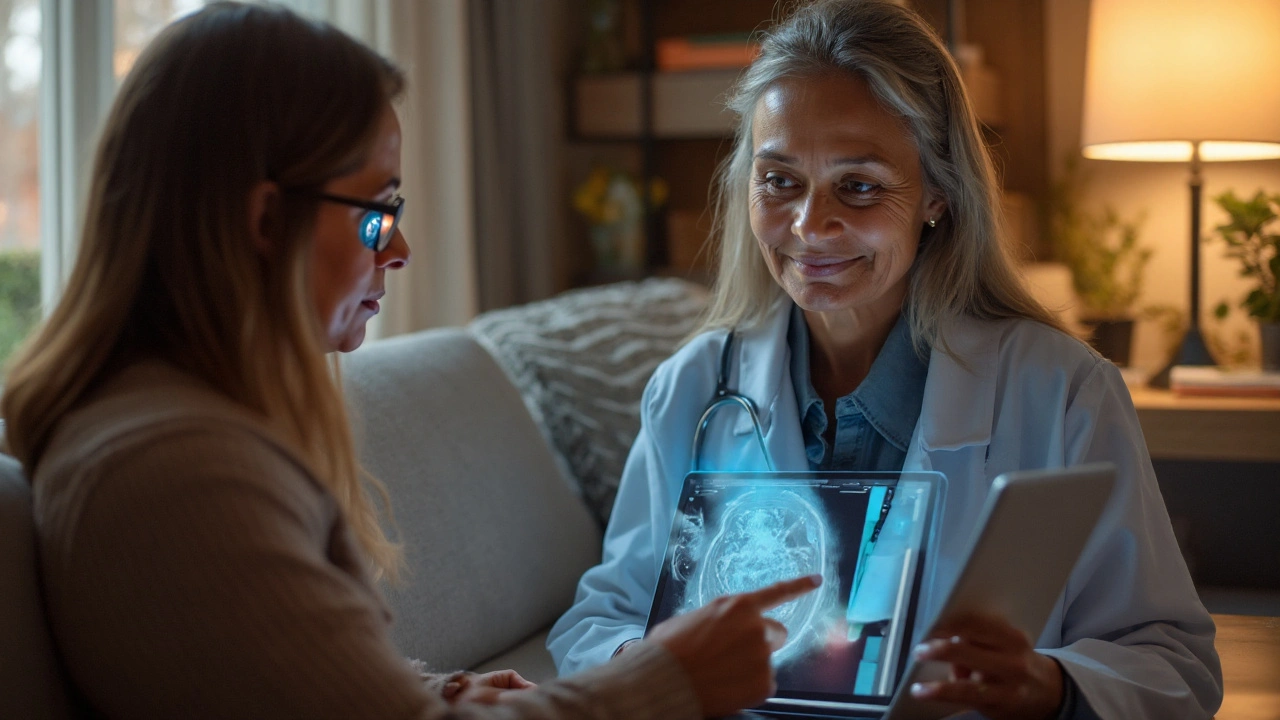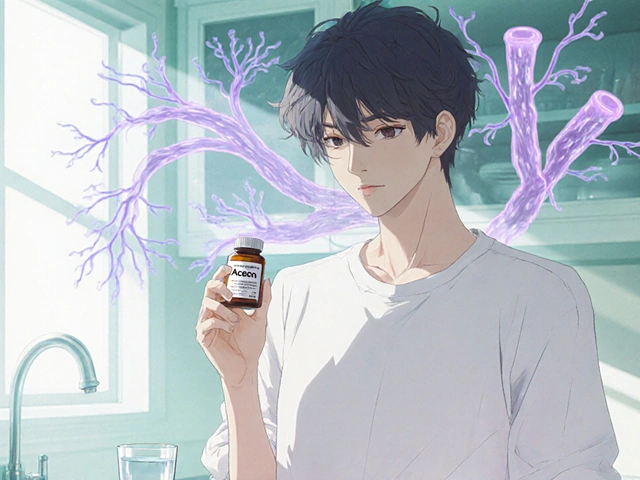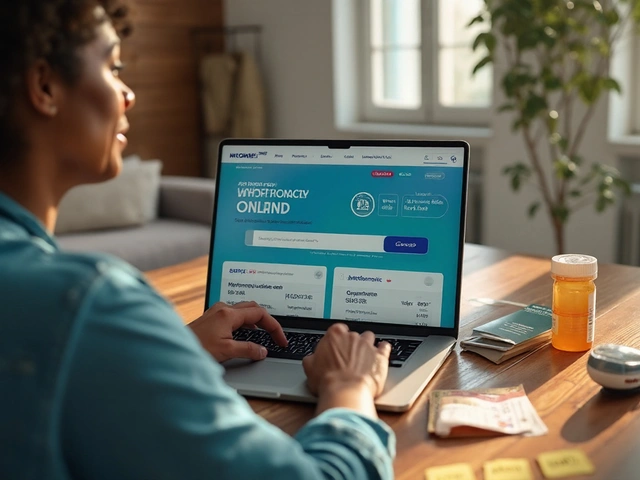Open‑Angle Glaucoma is a chronic eye disease that gradually damages the optic nerve due to elevated intraocular pressure. It is the most common form of glaucoma worldwide, affecting roughly 3% of adults over 40 and accounting for 90% of glaucoma‑related blindness.
Quick Takeaways
- Open‑angle glaucoma (OAG) often shows no symptoms until vision is significantly lost.
- Risk rises with age, family history, African or Hispanic ancestry, and high intraocular pressure.
- Regular eye exams with tonometry can catch OAG early.
- First‑line treatment uses prostaglandin‑analogue eye drops; laser or surgery follow if pressure stays high.
- Community screening programs halve the rate of preventable blindness.
What Is Open‑Angle Glaucoma?
Unlike angle‑closure glaucoma, where the drainage angle of the eye suddenly narrows, OAG’s drainage angle remains open but the trabecular meshwork works less efficiently. This subtle blockage lets fluid (aqueous humor) build up, pushing the optic nerve the bundle of retinal ganglion cell fibers that transmit visual information to the brain backward, leading to irreversible vision loss.
Why Awareness Is Crucial
Because OAG is silent, many people assume they’re fine until a routine eye test reveals damage. In the UK, the National Health Service reports that 35% of glaucoma cases are diagnosed after significant visual field loss. Early detection can preserve up to 80% of sight, a difference that translates to independence, safety, and quality of life.
Public awareness drives three key actions:
- Encourages at‑risk individuals to schedule regular eye exams with an ophthalmologist or optometrist.
- Promotes understanding of risk factors, so people can monitor themselves.
- Supports community screening initiatives that reach underserved populations.
Who Is Most at Risk?
Data from the World Health Organization (WHO) show clear demographic trends:
- Age: Prevalence doubles every decade after 40.
- Ethnicity: African‑descended individuals are three times more likely to develop OAG, while Hispanic populations face a 1.5‑fold increase.
- Family history: First‑degree relatives of a glaucoma patient have a 4‑to‑5‑fold higher risk.
- Medical conditions: Diabetes, hypertension, and myopia (nearsightedness) each add a modest risk.
Knowing these factors helps target awareness campaigns where they matter most.
How Is Open‑Angle Glaucoma Diagnosed?
Early detection hinges on two clinical tests:
| Tool | What It Measures | Typical Use |
|---|---|---|
| Tonometry | Intraocular pressure (mmHg) | First‑line screening in clinics and community settings |
| Ophthalmoscopy | Optic‑nerve head appearance | Detects characteristic cupping |
| Automated Visual‑Field Test | Peripheral vision loss patterns | Monitors progression over time |
| Optical Coherence Tomography (OCT) | Retinal nerve‑fiber layer thickness | High‑resolution structural assessment |
Among these, tonometry the quick, non‑invasive pressure measurement used by eye‑care professionals is the most accessible for community screening.

Treatment Options: From Drops to Surgery
When pressure is high, doctors aim to lower it enough to stop optic‑nerve damage. The therapeutic ladder looks like this:
- Prostaglandin analogues (e.g., latanoprost) - first‑line eye drops that increase fluid outflow. They reduce pressure by ~25% on average.
- Beta‑blockers (e.g., timolol) - supplement drops when pressure remains elevated.
- Laser trabeculoplasty - a one‑time procedure that improves drainage. Success rates hover around 70% at five years.
- Minimally invasive glaucoma surgery (MIGS) - tiny implants that create new outflow pathways with a low complication profile.
Choosing a therapy depends on pressure level, patient age, adherence potential, and cost. For many, a combination of drops and laser offers the best balance of efficacy and convenience.
Public‑Health Strategies That Work
Countries that embed glaucoma screening in primary‑care outreach see dramatic drops in blindness rates. Key components include:
- Risk‑based invitations: Target people over 40 with a family history or belonging to high‑risk ethnic groups.
- Portable tonometry units: Hand‑held devices let community nurses measure pressure in schools, workplaces, and care homes.
- Education bundles: Simple flyers that explain what glaucoma is, why it matters, and where to get checked.
- Data registries: Centralised glaucoma registries track incidence, treatment outcomes, and follow‑up compliance.
In Scotland, a pilot program using mobile tonometry vans reduced late‑stage OAG diagnoses by 42% within two years-a clear proof point for other regions.
Real‑World Example: The "See Clear" Campaign
Launched in 2022, the "See Clear" campaign teamed up with local radio, community centres, and the NHS to push OAG awareness in Glasgow’s high‑risk neighbourhoods. Tactics included:
- Free eye‑pressure checks at pop‑up stalls.
- Short video clips starring a popular Scottish comedian explaining glaucoma in plain language.
- Follow‑up reminder texts for anyone with borderline pressure.
Outcome metrics:
- 8,500 residents screened in six months.
- 210 new OAG diagnoses, 70% of whom were at an early stage.
- Self‑reported awareness of glaucoma rose from 22% to 68% in post‑campaign surveys.
The campaign’s success hinged on clear messaging, easy access, and a quick path to professional care.
What You Can Do Right Now
Even if you’re not a medical professional, you can help curb vision loss:
- Schedule a comprehensive eye exam if you’re over 40, or sooner with risk factors.
- Ask your optometrist about tonometry during the visit.
- Share reputable resources (e.g., NHS glaucoma page) with family members.
- Support local eye‑health charities that fund mobile screening units.
- Stay informed about new treatment options - technology advances quickly.
Quick Checklist for Glaucoma Prevention
- Know your family history - write it down.
- Get a baseline eye exam with intraocular pressure measurement.
- Track any changes in peripheral vision (e.g., difficulty seeing objects on the side).
- Maintain a healthy lifestyle - regular exercise can modestly lower eye pressure.
- Take prescribed eye drops exactly as directed; never skip doses.

Frequently Asked Questions
What are the early signs of open‑angle glaucoma?
Most people notice no symptoms at first. The only reliable clue is a subtle loss of peripheral (side) vision, which you might detect by bumping into objects or having trouble spotting things at the edge of your visual field.
How often should I have my eyes checked for glaucoma?
If you’re over 40 with no risk factors, an eye exam every two years is sufficient. High‑risk groups (family history, African or Hispanic ancestry, diabetes) should be screened annually.
Can lifestyle changes lower my glaucoma risk?
Regular aerobic exercise has been shown to reduce intraocular pressure by a few millimetres of mercury. Maintaining a healthy weight, controlling blood pressure, and avoiding excessive caffeine can also help.
Are eye‑drop side effects dangerous?
Most side effects are mild - temporary redness, itching, or darkening of the eyelashes with prostaglandin analogues. Rarely, systemic effects like low heart rate can occur, so discuss any concerns with your ophthalmologist.
What is laser trabeculoplasty and who needs it?
Laser trabeculoplasty uses a focused laser to improve fluid outflow through the drainage meshwork. It’s typically offered when eye‑drop therapy alone doesn’t achieve target pressure, especially for patients who struggle with medication adherence.
How effective are community screening programs?
Well‑designed programs can detect up to 70% of undiagnosed cases earlier than routine care. The key is targeting high‑risk populations and providing a clear referral pathway to an ophthalmologist.
Is there a cure for open‑angle glaucoma?
Currently, there is no cure. Treatment aims to control pressure and preserve existing vision. Ongoing research into gene therapy and neuroprotective drugs holds promise for future breakthroughs.
What should I do if I miss a dose of eye drops?
Take the missed dose as soon as you remember, unless it’s almost time for the next dose. In that case, skip the missed one and continue with your regular schedule. Never double‑dose.







dayana rincon
September 23, 2025 AT 13:57Orion Rentals
September 24, 2025 AT 23:42Sondra Johnson
September 26, 2025 AT 13:58Chelsey Gonzales
September 27, 2025 AT 21:37MaKayla Ryan
September 27, 2025 AT 23:58Kelly Yanke Deltener
September 28, 2025 AT 11:08Sarah Khan
September 29, 2025 AT 16:44Kelly Library Nook
September 30, 2025 AT 13:46Crystal Markowski
October 1, 2025 AT 23:23Charity Peters
October 2, 2025 AT 09:32Faye Woesthuis
October 3, 2025 AT 04:44raja gopal
October 3, 2025 AT 21:16Samantha Stonebraker
October 4, 2025 AT 12:36Kevin Mustelier
October 6, 2025 AT 11:20Keith Avery
October 6, 2025 AT 22:38Luke Webster
October 7, 2025 AT 02:28Natalie Sofer
October 7, 2025 AT 03:03Tiffany Fox
October 7, 2025 AT 08:10Rohini Paul
October 8, 2025 AT 05:30